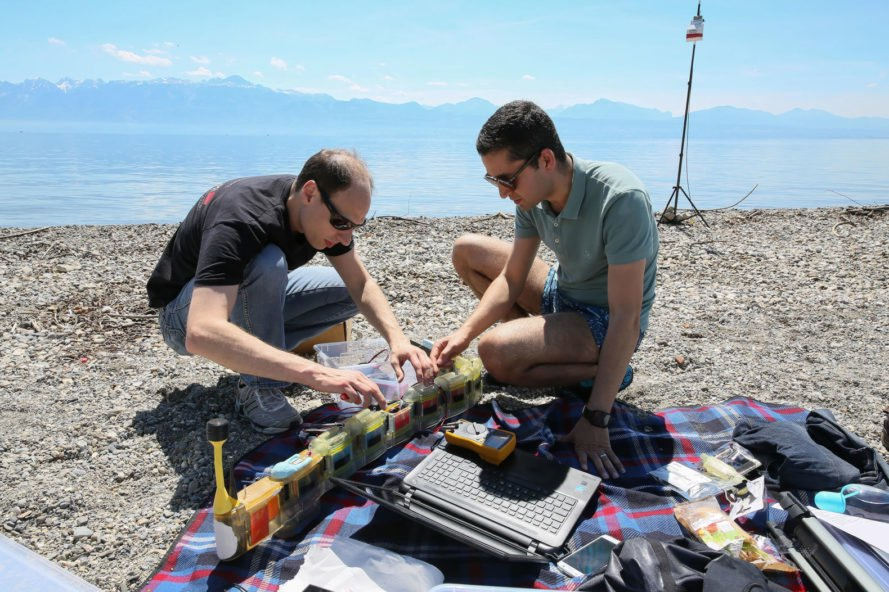Source: inhabitat.com
Published: July 27, 2017
Lake Geneva’s latest resident—all four feet of it—is neither man nor beast. Dubbed the Envirobot, the critter is a biomimetic robot designed by Swiss researchers to pinpoint the source of pollution in tainted waters. Bereft of fins or propellers, Envirobot slithers through water like an eel, leaving mud and aquatic life undisturbed. Just as stealthily, it uses sensors to gather data from various locations, which it transmits to a remote computer in near-instantaneous fashion.

Even for an automaton, Envirobot is uncommonly clever. Besides its capacity to follow a preprogrammed path, it can also make its own decisions, independently sniffing out the origin of the contamination.
“There are many advantages to using swimming robots,” said Auke Ijspeert, head of biorobotics at École Polytechnique Fédérale de Lausanne, in a statement. “They can take measurements and send us data in real-time—much faster than if we had measurement stations set up around the lake.”
The serpentine design, which is supported by a series of small electric motors, has several advantages, as well. “Compared with conventional propeller-driven underwater robots, they are less likely to get stuck in algae or branches as they move around,” Ijspeert said. “What’s more, they produce less of a wake, so they don’t disperse pollutants as much.”

Funded through a grant from Switzerland’s Nano-Tera program, Envirobot comprises several modules. Some of these contain conductivity and temperature sensors; others have miniaturized biological sensors that harbor bacteria, small crustacean, or fish cells that respond to water toxicity in different ways.
The modular tack also makes it easy for engineers to change Envirobot’s composition or vary its length when the occasion calls for it.
“The robot can be easily taken apart, transported to a remote water reservoir, for example, and put back together to begin testing,” said Behzad Bayat, another biorobotics scientist at EPFL.

Already, Envirobot has taken several dips in Lake Geneva. It recently underwent a test that simulated water pollution by diffusing salt into a tiny area just off the shore, changing the water’s conductivity. The ersatz eel, researchers said, performed swimmingly.
Although the ultimate goal is for Envirobot to pick up heavy metals and other pollutants, field tests for the “eel’s” biological components are trickier to carry out.
“We obviously can’t contaminate a lake like we do the test water in our lab,” said Jan Roelof van der Meer, project coordinator and head of the department of fundamental microbiology at the University of Lausanne. “For now, we will continue using salt as the contaminant until the robot can easily find the source of the contamination. Then we will add biological sensors to the robot and carry out tests with toxic compounds.”
